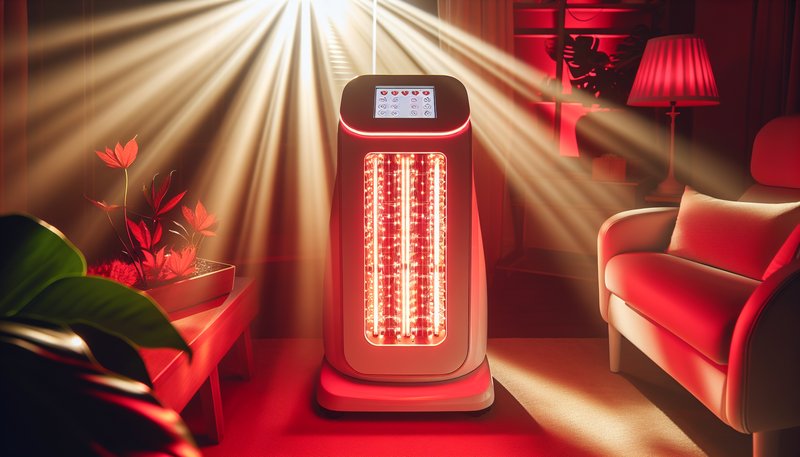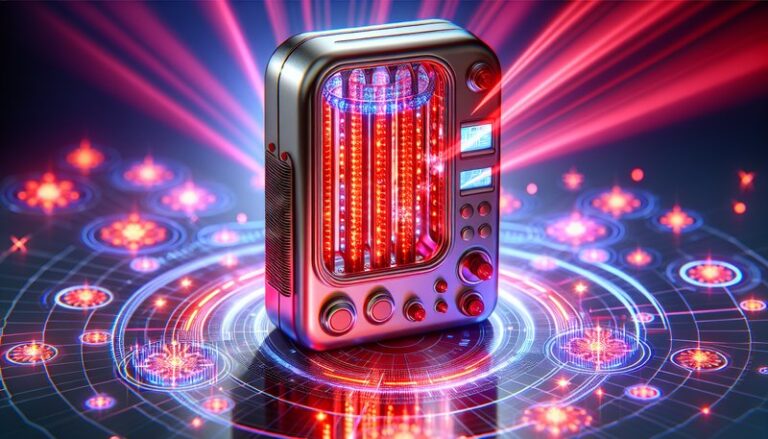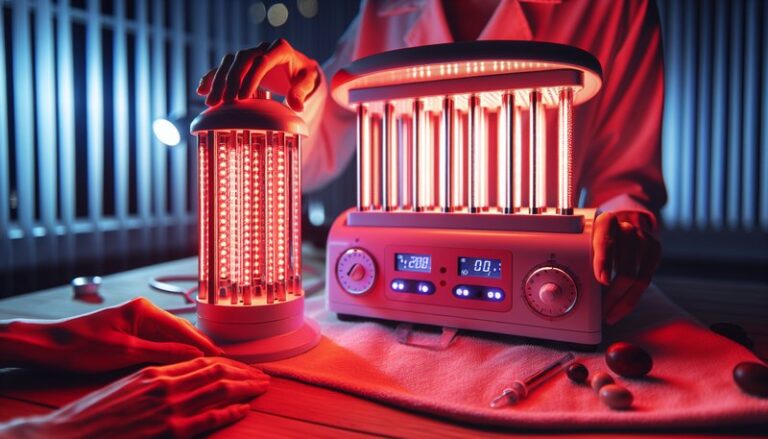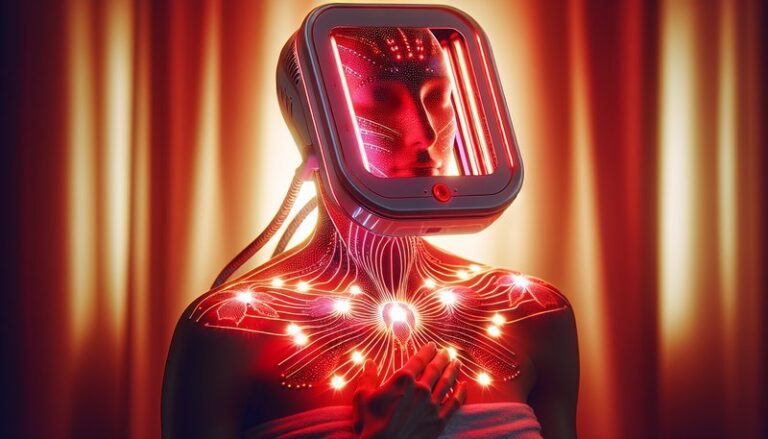Does Uv Red Light Therapy Work?
Are you seeking solutions for skin rejuvenation or pain relief? You may have stumbled upon UV red light therapy—a treatment that is gaining popularity for its potential benefits.
In this article, we will explore what UV red light therapy is, its claimed benefits, the feasibility of using it safely, alternative options, and ultimately whether it is recommended for your use. By the end, you’ll have a clearer understanding of whether this therapy could be right for you.
Key Takeaways
- UV red light therapy may improve skin health and relieve certain types of pain.
- While generally considered safe, proper precautions are necessary to maximize benefits and minimize risks.
- Various alternative therapies are available that could also support skin health and pain management.
What is UV Red Light Therapy?
UV red light therapy is a treatment that utilizes specific wavelengths of red light, typically between 600 to 650 nanometers, to penetrate the skin and stimulate various physiological processes. This non-invasive therapy is often employed in dermatology and physical therapy for its potential healing properties.
The science behind UV red light therapy lies in its ability to promote cellular regeneration by stimulating collagen production, enhancing blood circulation, and accelerating healing in tissues. This has garnered attention for both aesthetic applications, such as reducing fine lines and improving skin tone, and therapeutic uses in pain management and inflammation reduction.
How Does It Work?
The red light penetrates the skin’s layers, activating mitochondria (the powerhouse of the cell), which promotes energy production. The result can lead to increased skin elasticity, improved healing, and diminished inflammatory responses. This biological interaction makes UV red light therapy an intriguing field of study, with ongoing research into its efficacy.
What are the Benefits of UV Red Light Therapy?
The advantages of UV red light therapy are extensive and varied, encompassing both dermatological and therapeutic benefits.
Skin Rejuvenation
One of the most well-known benefits of UV red light therapy is its ability to promote skin rejuvenation. Studies indicate that it can reduce the appearance of wrinkles, fine lines, and age spots, effectively creating a more youthful complexion. For example, treatments have shown to enhance collagen synthesis, which is crucial for maintaining skin elasticity.
Pain Relief
UV red light therapy has been recognized for its analgesic properties. Patients suffering from chronic pain conditions, such as arthritis or tendonitis, report varying degrees of relief following treatments. The therapy helps to reduce inflammation and speed up the healing of affected tissues, offering a non-pharmacological option for pain management.
Read the extensive guide Does Red Light Therapy Help Nerve Pain?
Wound Healing
The therapy may expedite the body’s natural healing processes. Research has demonstrated that UV red light can enhance wound healing by improving circulation and promoting tissue repair. This makes it an attractive option for individuals with slow-healing wounds or conditions like diabetic ulcers.
See the complete post Frequency of Facial Red Light Therapy?
Enhanced Mood and Energy
Some studies suggest that red light therapy may positively impact mood and energy levels. By improving blood flow and oxygenation, individuals often report increased vitality and reduced symptoms of fatigue.
Is it Possible to Use UV Red Light Therapy Safely?
While UV red light therapy can offer numerous advantages, safety is a concern that should not be overlooked. It is indeed possible to use it safely if certain guidelines are followed.
What are the Advantages of Safe Usage?
Using UV red light therapy with safety in mind can maximize benefits while minimizing potential risks.
Prevent Skin Damage
Proper utilization ensures that the treatment does not lead to skin damage. By adhering to recommended exposure times and distances, you protect your skin from excessive UV exposure, mitigating any adverse effects.
Improved Treatment Outcomes
When conducting the therapy within recommended parameters, you can achieve better treatment outcomes. Consistency in usage leads to cumulative benefits, providing longer-lasting results in terms of skin health and pain relief.
Reduction of Side Effects
By prioritizing safety, practitioners can minimize side effects, such as temporary redness or irritation in treated areas. Knowledge of skin types and conditions can help tailor the treatment process, further enhancing its safety profile.
What are the Things to Consider Before Using UV Red Light Therapy?
Before embarking on a regimen of UV red light therapy, several considerations should be taken into account to ensure a positive experience.
Skin Type and Sensitivity
Understanding your skin type and sensitivity is essential. Individuals with sensitive skin may react differently to red light therapy, necessitating adjustments in treatment duration and frequency.
Existing Medical Conditions
Consultation with a healthcare provider is crucial, particularly if you have pre-existing medical conditions such as photosensitivity disorders or specific skin conditions. Certain medical histories may contraindicate the use of this therapy.
Device Quality and Professional Guidance
The quality of the device used for therapy is paramount. Utilizing high-quality, clinically-validated devices can significantly impact efficacy and safety. Seeking professional guidance from licensed practitioners can also ensure the therapy is performed correctly.
What are the Alternatives to UV Red Light Therapy?
While UV red light therapy shows promise, various alternative therapies may also serve your needs.
LED Light Therapy
Similar to UV red light therapy, LED light therapy utilizes different wavelengths of light to treat skin issues and pain. It is known for its versatility in targeting a wide range of conditions, including acne and inflammation.
Laser Treatments
Laser treatments, which can be more intense than red light therapies, offer targeted results. They effectively treat scars, pigmentation issues, and other skin conditions, but they may involve a longer recovery time.
Topical Treatments
Topical treatments, such as retinoids and hyaluronic acid, provide another method for skin rejuvenation. These treatments can be effective but may require consistent use over time for noticeable results.
Conclusion: Is it Recommended to Use UV Red Light Therapy?
Overall, UV red light therapy presents a viable option for individuals seeking solutions for skin rejuvenation and pain relief. Its benefits can be significant, particularly when used safely under professional guidance. However, it is essential to consider individual skin types, pre-existing conditions, and alternative therapies available. Ultimately, consulting with a healthcare professional will help determine if UV red light therapy aligns with your specific health goals.
Frequently Asked Questions
Is UV red light therapy safe for all skin types?
UV red light therapy is generally considered safe, but individuals with certain skin sensitivities or conditions should consult with a healthcare provider before beginning treatment.
How long does it take to see results from UV red light therapy?
Results can vary based on individual conditions and treatment frequency. While some may notice immediate improvements, significant changes may take several weeks to months of consistent use.
Can I perform UV red light therapy at home?
Home devices are available; however, it’s crucial to ensure they are of high quality and to follow manufacturer instructions carefully. Professional guidance can help optimize your results.
Are there side effects associated with UV red light therapy?
Most people experience minimal side effects such as temporary redness. However, precautions should be taken to avoid adverse reactions, especially for those with sensitive skin.
What should I do if I experience discomfort during treatment?
If discomfort arises during UV red light therapy, it is essential to stop the treatment immediately and consult a healthcare professional for advice on how to proceed.






